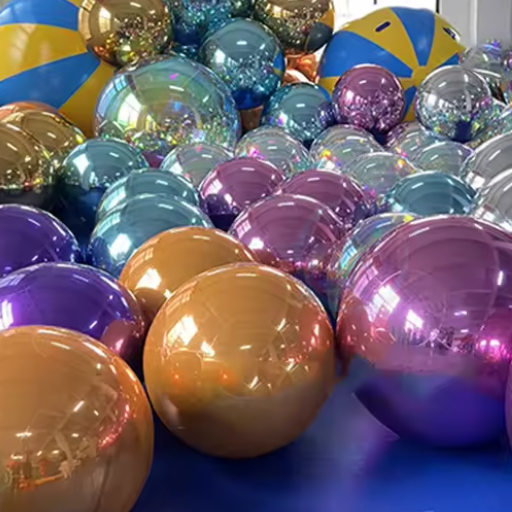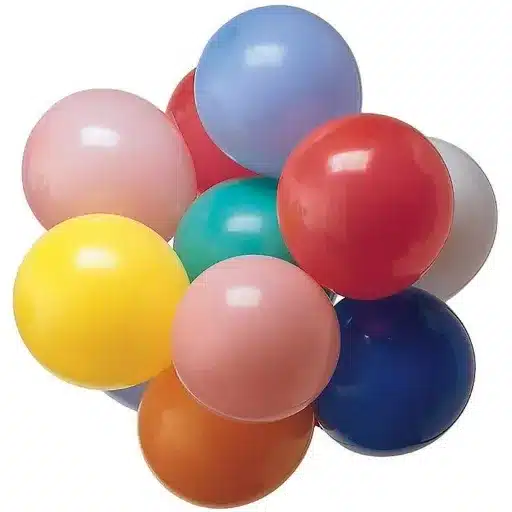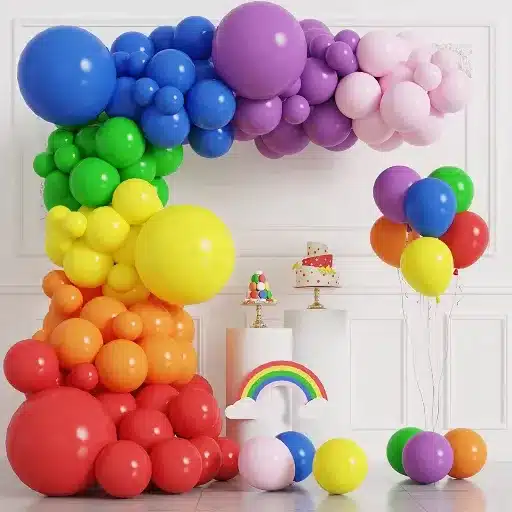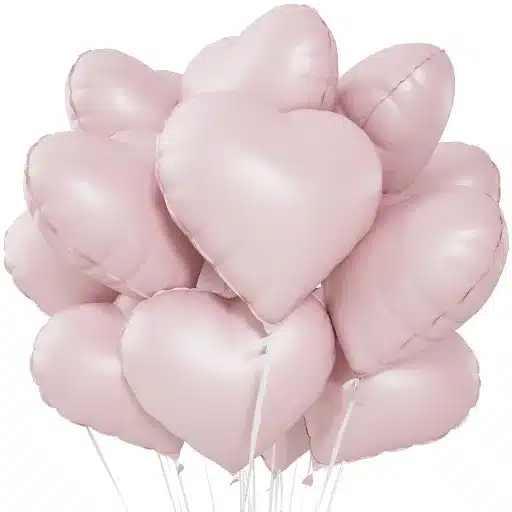Helium latex balloons are those festive and colorful decorations for joyful atmosphere. One common question asked is how long these cheerful decorations last. Knowing how long helium latex balloons last will help with planning and coordination so that the balloon remains afloat when it matters most. This time we’ll look into the lifespan of helium latex balloons from environmental condition to the material quality and from there offer suggestions on how to extend the life of your balloons. From party to wedding or any event, this guide will help you to earn great money with these happy additions.
Back to The Importance of Balloon Type

More impactfully than any other factor, the balloon type you choose determines how long it will float. Latex helium balloons, for example, are widely used because of their cheap price and brilliant appearance but hold a shorter life compared to foil balloons. Helium latex balloons normally float for 8-12 hours under ordinary circumstances, while foil balloons tend to stay above for several days and even weeks on some occasions.
Quality of materials is a very important factor here. Latex is porous in nature and helium slowly escapes through it. Whereas, foil balloons are made of non-porous synthetic material that keeps helium trapped inside better, hence greatly increasing the time for which they stay afloat. Foil balloons also do not degrade quickly due to environmental factors like sudden increases in humidity or temperature changes, thereby making them suitable for outdoor events.
Research has shown that high-quality treated latex balloons can maximize float time. Transparent sealants like Hi-Float, applied on the inside of the balloon, increase the life of helium latex balloons to about 24 hours or longer. Vocabulary that explains each type and choosing the right one for your special event will help you generate decorations that almost last through the event, creating an undiminished appeal for the celebration.
Factors Affecting How Long Balloons Last

Different factors affect the lifespan of balloons: some are the kind of balloon material, the environment, or the method of inflation. From my experience, latex helium balloons last around 8-12 hours, though those inflated with air could last for several days or even weeks. However, there are other kinds of balloons called foil balloons that can stand much longer from a few weeks with helium to even months with air. Environmental conditions like heat, humidity, and sunlight greatly affect a balloon’s lifespan in-flight.
Material Type: Latex vs. Foil Balloons
The material of a balloon affects its look, durability, and performance. Latex balloons are made from natural rubber and thus biodegradable, making them an eco-friendlier option. Very versatile, they come in all sorts of different colors and sizes, finishes like matte or metallic. Due to their porous nature, latex balloons tend to lose helium within 12 to 24 hours.
Foil balloons exist of a fine finish of metallic treat upon nylon. Due to their less porous nature than latex, helium-filled foil balloons can stay afloat for several days or weeks. Foil balloons represent shiny and reflective surfaces and thus come in popular unusual shapes or printed designs to attach an opportunity for themed events. While not much environmentally friendly than latex, their durability and appearance have put them on demand for longer use and decorative impact. The choice of balloons basically comes down to the occasion or individual tastes.
Environment Condition Influencing Float Time
Float time can be substantially affected due to the variations in environmental conditions for these balloons, be they latex or foil. Helium starts to expand with high heat, causing over-inflation and a higher chance of bursting, mostly for latex balloons. Reduced temperature would do the exact opposite; it contracts the helium and decreases the float time, also making the balloons look deflated.
Wind and sunlight also speed up the degradation of latex balloons, with UV rays weakening the material. Humidity is also a factor, as an increase in moisture actually speeds up the degradation of latex. For foil balloons, it’s a different matter; environmental fluctuations don’t really matter much due to their sturdy construction, but on the other hand, extreme heat can be harmful and weaken the seams. The best way to maximize float time would be to keep the balloons under stable and moderate conditions, away from direct sunlight or severe weather.
How Long Do Helium Balloons Last?

An important aspect of investigating the lifespan of helium balloons is their material composition and the external factors influencing them. From personal experience, latex helium balloons stay up and float for about 8-12 hours before significant deflation, while foil balloons may remain afloat for days: perhaps a week and sometimes longer. Storage requirements can play a big role, as temperature and exposure to sunlight are key factors that tend to shorten balloon life.
Average Lifespan of Helium-Filled Balloons
The lifespan of helium-filled balloons depends greatly upon several factors: balloon materials and environmental conditions. With regard to latex balloons kept indoors, properly inflated, and treated with Hi-Float solution, the float time can be somewhere around 12 to 24 hours. Without treatment, this time is usually reduced to about 8-12 hours.
On the other hand, foil balloons, also called mylar balloons, tend to have a much longer life, often floating anywhere from 3 to 5 days. Some types of foil balloons can keep helium for weeks if maintained under good conditions! Sharp objects or long exposure to sunlight and elevated temperatures are common threats to those durations, thus considerably shortening them. When well cared for, helium balloons can stand witness to every ceremony for as long as technically feasible.
Comparison between Helium and Latex Balloons
There are quite a few differences between helium-filled latex balloons and foil ones. Latex balloons are usually cheaper and more accessible and thus considered to be a favorable option for bigger events or temporary decorations. On the contrary, they have a shorter lifespan, usually floating for 12 to 24 hours under given size and environmental conditions.
The helium-filled foil balloons, on the other hand, tend to have a longer float time, which, alongside careful handling, sometimes even lasts for days or weeks. Another thing that makes foil balloons better at retaining helium is their reduced porosity compared to latex. While latex balloons have the benefit of being biodegradable, foil balloons can be reused if not punctured. Much of the decision is thus based on individual occasion needs, weighing budgets, duration, and ecological considerations accordingly.
Tips to Extend the Life of Balloons
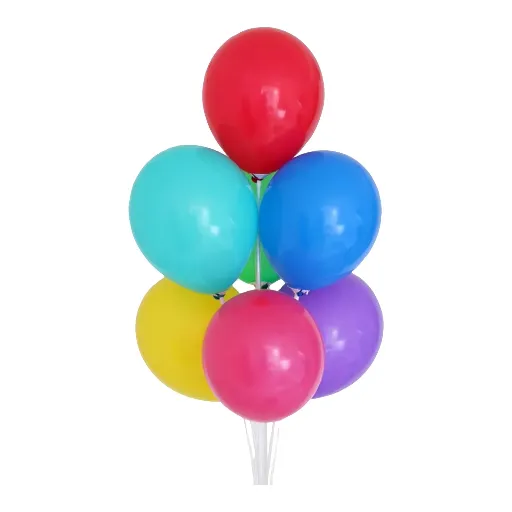
To extend balloon life, I keep balloons away from sharp objects and extreme heat and away from direct sunlight because sharp objects can cause them to burst, the sun will make them lose helium fast, and heat will do away with the air inside faster. Also, I like to use Hi-Float on the latex balloons to keep helium longer. Regarding foil balloons, I make sure they are well-sealed and treated with care to avoid sharp punctures so that they can be reused.
The Best Way to Inflate
Balloons must be properly inflated in order to give them the life and look they deserve. As a first measure, avoid over-inflating because this might cause the balloon to burst or stretch excessively, causing it to lose durability. For latex balloons, using a hand pump or an electric inflator is best for achieving consistent inflation. If using helium, make sure the inflating nozzle fits tightly to avoid leaks from being lost during the inflating process. For foil balloons, inflate slowly, stop when the balloon feels firm, and avoid any sharp objects that can puncture the balloon surface. Also, always inflate balloons in a cool and shady area, as heat on the material causes expansion and may compromise it. With these practices, one can maximize the joy of having balloons around, whether decorations or celebrations.
Using Balloon Treatments to Prevent Deflation
Balloon treatments help keep helium-filled latex balloons afloat longer. Treatments such as Hi-Float coat the interior wall of the balloon, thus minimizing the escape of helium. Untreated latex balloons generally float for about 8-12 hours, whereas, when treated, their float time extends to several days, usually somewhere between 3-5 days under optimum conditions, according to current research and data.
When treating balloons, ensure the coating covers the inside evenly before the balloon is inflated. This treatment then acts as a barrier that slows helium from seeping through the balloon walls. Research shows that good-quality balloon treatments can cut helium loss by half, making it a worthy investment for good looks at events and celebrations. The best results are when treated balloons are stored in a cool and temperature-controlled environment. Along with treatments, inflation also keeps decorating balloons intact and looking fresh for longer stretches, even into extended show days.
Ideal Storage Conditions for Longevity
Appropriate storage conditions have a strong bearing on the life expectancy and outward appearance of balloons, especially those treated with helium retention solutions. To increase the lifetime of a balloon, it has to be kept in an environment that is cool, dry, and temperature-controlled. The best temperature for balloon storage is between 68°F to 72°F (20°C to 22°C) since extreme heat or cold from the storage site will damage the latex or foil material making it expand, contract, or become brittle. Besides, high humidity must be avoided, as too much moisture will, in the long run, ruin the latex balloons.
Keep balloons away from direct sunlight or heat from any source, such as heating vents or lamps, as ultraviolet rays and heat will accelerate helium dissipation and also cause discoloration of balloons. Studies have revealed that balloons that have been stored in ideal storage conditions lose less helium in a very significant way; sometimes this drop is as much as 25% when compared to balloons that were stored in less than perfect conditions. Deflated balloons when not in use should be kept in airtight containers that are sealed tightly so that they remain free from air pollutants and dust, both of which undermine material quality.
Common Misconceptions About Balloon Life
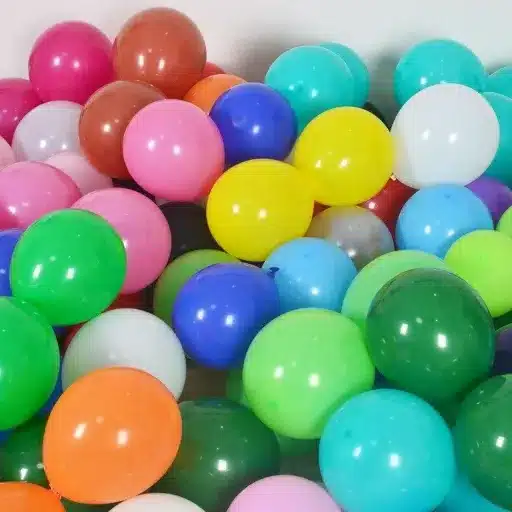
I would say that the key to maximizing balloon life is proper storage and handling. Keeping balloons in cool, dry conditions, with minimum exposure to extreme temperature or direct sunlight, helps to reduce helium dissipation and the deterioration of the material. And deflated balloons, when sealed in airtight containers, are protected from air pollutants or dust and thus maintain their quality.
Helium Balloon Myth That They Stay in the Air Forever
That is one very common misconception about helium balloons: that they float away forever once inflated. The buoyancy imparted by helium in balloons, however, is temporary, for latex and some other balloon materials are somewhat porous. Rather soon, helium molecules seep out through the walls of the balloons, thus losing their buoyant properties. Depending on the surrounding conditions in terms of humidity and temperature, latex balloons generally float for about 12 to 24 hours, while foil (or mylar) balloons can usually last for 2 to 5 days.
Another common misconception goes that one can make balloons last forever with a sealant. Any treatment like Hi-Float that slows helium leakage from helium-filled latex balloons certainly prolongs their life. It does not, however, make them last forever. According to the studies, balloons with a Hi-Float coating may last at least a week or possibly longer, but they will eventually lose gas due to external factors.
Know When Balloons Are Deflating
Helium balloons deflate with time since helium leaks through the material of the balloons. Latex balloons, for instance,are extremely porous, and helium molecules, being extremely small, quite fast pass through them. The average deflation time of untreated latex balloons is 8 to 12 hours. On the other hand, foil or Mylar balloons retain helium longer since they are made of less porous material and often stay afloat for days or even weeks in good conditions.
External factors, such as temperature and humidity, influence balloon deflation greatly as well. On the other side, coldness causes the helium to contract and the balloons to appear deflated, and heat expands helium, and it can even pop the balloons. Studies state that a drop in the temperature from 70°F to 50°F can shrink a helium balloon by almost 25%.
Reference Sources
-
Party On Butler
- Title: How Long Do Helium Balloons Last? Tips for Balloon Decor
- Summary: This source provides insights into the float time of helium balloons, including tips for extending their lifespan, making it a practical guide for event planners and DIY hosts.
-
Balloonatics Party Shop
- Title: How long does helium last in foil balloons?
- Summary: This article discusses the lifespan of helium in both latex and foil balloons, offering detailed information on how long they stay inflated under different conditions.
-
Balloon HQ
- Title: How Long Do Balloons Stay Inflated
- Summary: This source provides expert advice on the inflation duration of helium-filled latex balloons, including tips to extend their float time, making it a credible reference for readers.
Frequently Asked Questions (FAQs)
How long would a balloon last filled with air?
Depending on their size and the conditions in which they are kept, air-filled balloons can last from a few days to maybe a couple of weeks. If you must, keep your balloons indoors in a cool, air-conditioned room.
What about helium affecting the life of helium balloons?
Helium plays an important role in float time for helium balloons. But, since helium gas is lighter than air, the gas leaks slowly, shortening the balloon life compared to an air-filled balloon.
How long do latex balloons last when filled?
When filled with helium, latex balloons last up to 12 hours and when filled with air, they last for several days. The size of a balloon and the sealing quality affect the life of the balloon.
Do bigger balloons last longer than smaller ones?
Bigger balloons may last longer than smaller balloons, as they have more volume and surface area to keep the gas for a longer time. However, environmental factors hold a more significant role in their lifespan.
How to extend the life of balloon decorations?
You can extend the life of your balloon decorations by using Hi-Float, which coats the insides of the balloons to keep helium longer. Keeping the balloons in a cool and shaded place also prevents shriveling.
How long do foil balloons last compared to latex balloons?
Foil balloons last for days to weeks, sometime even longer than latex balloons. Because of their less porous nature, they do not allow gas to escape so quickly, thus making them a great choice for the extended party decorations.
Key Takeaways
- ✓ Untreated latex balloons float for 8-12 hours
- ✓ Hi-Float treatment extends life to 3-5 days
- ✓ Store at 68°F-72°F for optimal longevity
- ✓ Foil balloons last significantly longer than latex
- ✓ Avoid direct sunlight and extreme temperatures

